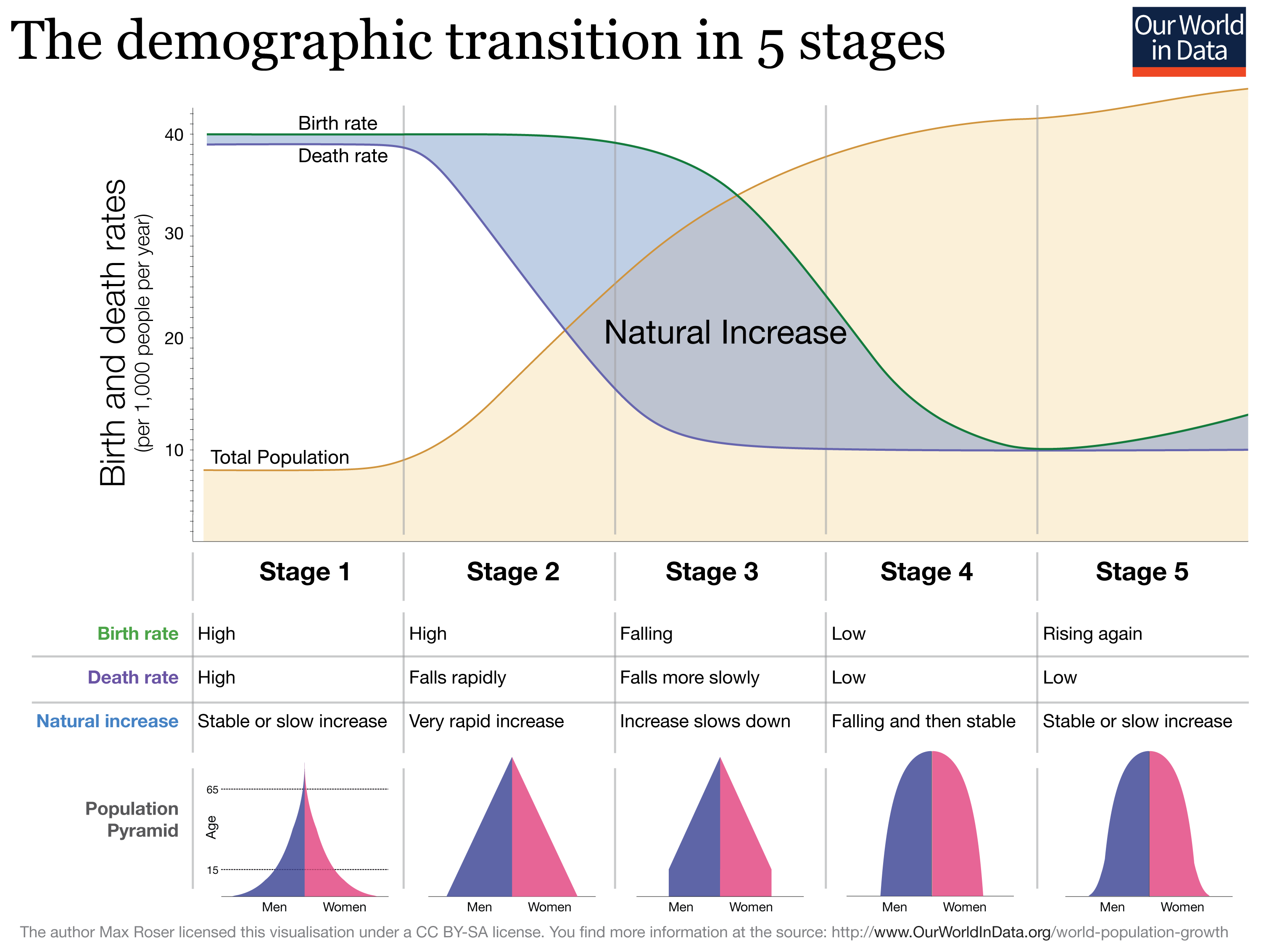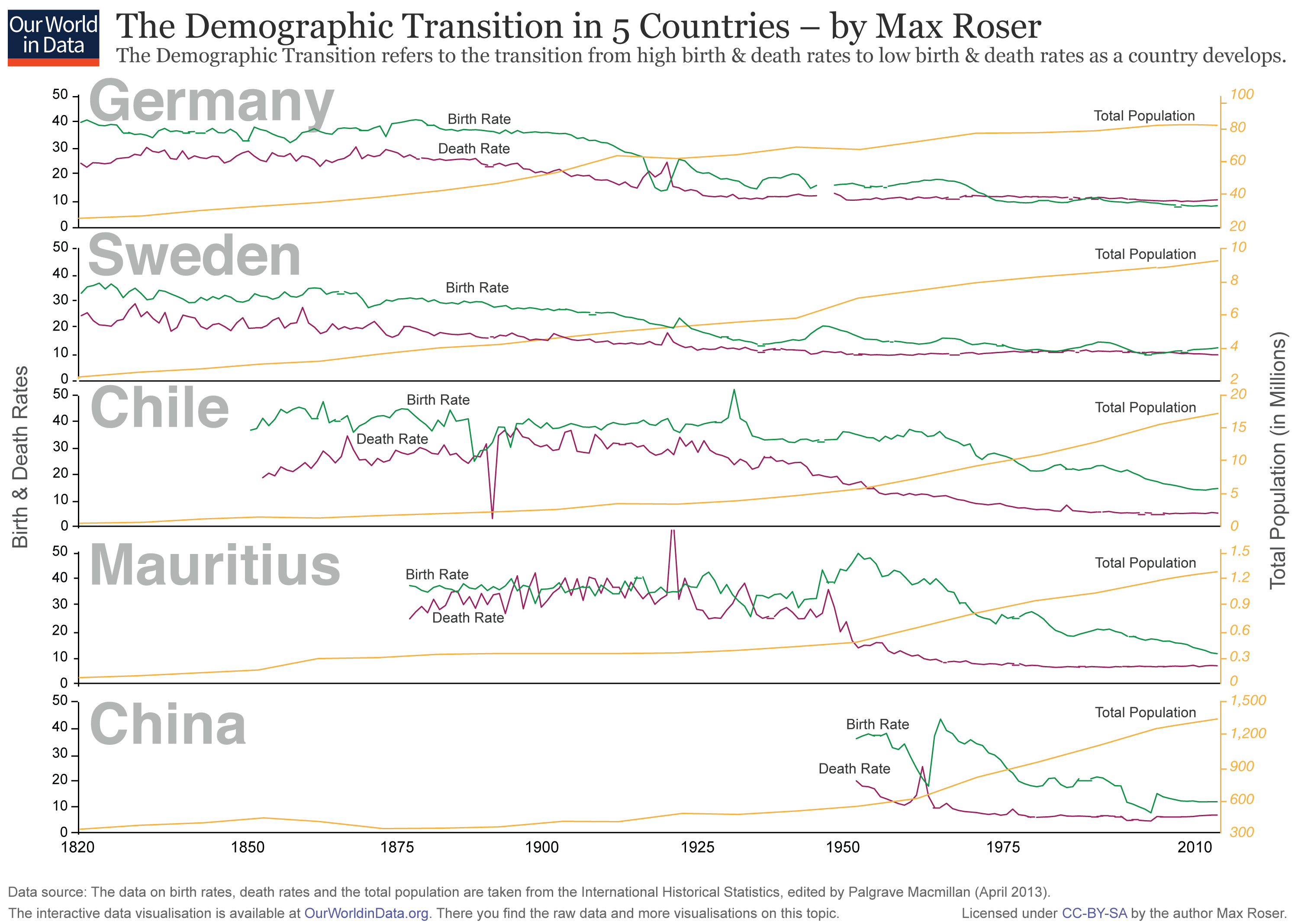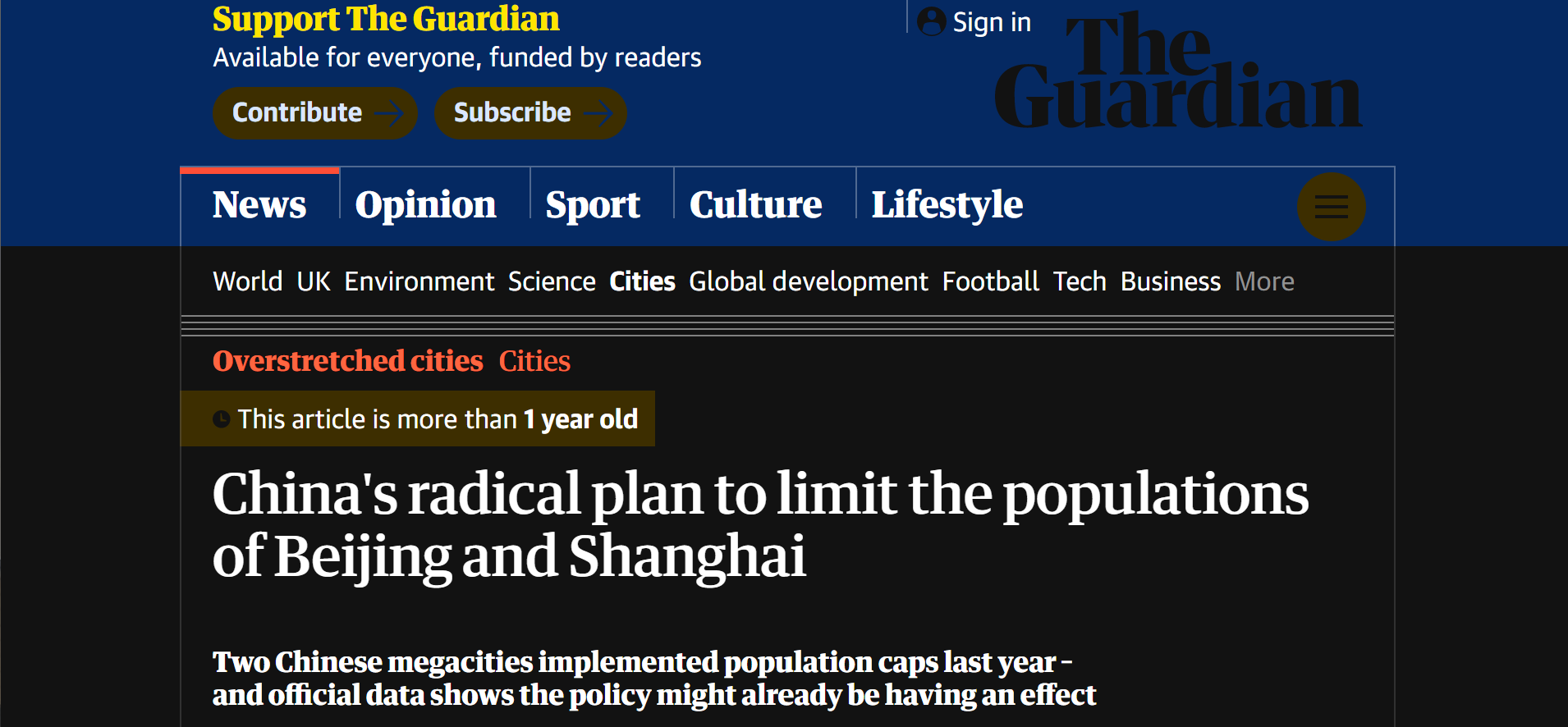Key Terms
| Term |
Definition |
|
North-South divide /Brant Line
|
An increasing trend of inequality in levels of development between the North (HICs) and South (LICs) |
| Development gap |
Wealth difference between the developed and the developing |
| Population distribution |
The spatial pattern of where people live |
| Population density |
Number of people living within a given area |
Millionaire city
|
A city with more than a million residents |
Migration
|
Voluntary or involuntary (forced) movement of a population's place of residence. Can be internal and external (international) |
| Female empowerment |
Promoting female rights and place in the economy |
Population and economic development patterns
Population Distribution factors
| Factor |
Effect |
| Distance from sea |
Proximity - availability of seafood, marine trading routes... |
| Elevation |
Low - easy travel, trading, increased probability of factors bellow and their effects |
| Fertile land |
Higher/easier agricultural production, allowing on development in other sectors |
| A regular supply of freshwater |
Affects fertile land, river trade route, focus on other basic human needs |
| Temperate climate |
Affects fertile land, and provides a generally agreeable way of living. |
Population distribution in CHINA
Facts and Figures:
- The population is concentrated in the eastern part of the country, in coastal zones and low altitude river valleys
- Rest of the land is mostly desert (Gobi Desert), steep slopes (Himalayas) and dry grasslands of the north-west
- 11% (115 million people) live on just 0.5% of the land
- Only a small proportion of the land can provide for rain-fed agriculture
How China's Economic Growth will Change Population Distribution
- China has more than 50 millionaire cities
- By 2020 a further 350 million urban inhabitants will migrate to cities
Internal Migration in China
- Since 1978, 160 million migrants moved from rural areas to seek work in urban areas
- Urban wages are 40% higher than rural wages

Classification of economic development and other classifications
|
Acronym
|
Term
|
Properties
|
|
HIC
|
High-Income Country
|
Per Capita > 12,735 (USD)
|
|
LIC (LEDC)
|
Low-Income Country
|
Per Capita < 1,025
|
|
MIC
|
Middle-Income Country
|
1,025 < Per Capita > 12,735
|
|
LDC
|
Least Developed Countries
|
Countries with the lowest development indicators
|
|
NICs
|
Newly Industrializing Countries
|
Rapid industrial grows since the ‘60s
|
|
OPEC
|
Organization of Petroleum Exporting Countries
|
Represents the interest of some oil-exporting companies.
|
|
G7/8
|
Group of Seven/Eight
|
Group of the wealthiest countries: Canada, France, Germany, Italy, Japan, UK, USA + Russia (suspended)
|
|
G10/ Paris Club
|
Group of Ten
|
Wealthiest members of the IMF (International Monetary Fund)
|
|
MINT
|
Mexico, Indonesia, Nigeria, Turkey
|
Large population emerging economies.
|
World Bank Classifications
| Classification (income) |
Gross National Income (GNI) per capita in USD |
| Low |
>1,025 |
| Lower-middle |
1,026<4,035 |
| Higher-middle |
4,036<12,475 |
| Higher |
12,475< |

Economic Growth
Economic growth is the increase in real GDP or GDP per capita.
Direct factors:
- Human resources - increasing the active population, investing in human capital
- Natural resources - land, underground resources
- The increase in capital employed
- Technological advancements
Indirect factors:
- Institutions - financial institutions, private administrations, etc.
- The size of the aggregate demand
- Saving rates and investment rates
- Budgetary and fiscal policies
- Migration of labour and capital
- The efficiency of the financial system
- The efficiency of the government
The Core-Periphery Model

Cores Develope because...
High Value-added products require:
- lots of labour in a concentrated area.
- Transport infrastructure for raw material.
Semi Periphery Cores Develope because...
- New Resources are found. (e.g. gold and oil in California)
- The high cost of land and over development in cores. (e.g. High cost of land in New York)
- They are connected by transport routes (e.g. The transcontinental Railway)
Changing population and place
Diagrams
Population Pyramids
Dependency Ratio =

Demographic Transition Model


Population Measurements
| Term |
Definition |
| Natural Increase |
Birth Rate - Death Rate (when B.R.>D.R.) |
| Natural Decrease |
Death Rate - Birth Rate (when D.R.>B.R.) |
| Natural Change |
Natural Increase or Decrease (change) |
| Population Change |
The change in the number of people living in a country (Incl. Birth Rate, Death Rate, and Migration) |
| Doubling Time |
Number of years it takes for a population to double in size 70 (years) / Natural Increase (%) |
Population Momentum
|
The tendency of a population continuing growth despite dropping birth rates, due to a comparatively low death rate |
Population Projections
|
Predictions about future populations based on fertility, mortality, and migration |
Make sure you learn these because they are important for your exam.
Fertility Rate
Total Fertility Rate (TFR) - the average amount of births per 1000 women of childbearing age.
Factors affecting the TFR
| Factor |
Description |
| The status of women |
This umbrella term is assessed by the Gender-related Development Index (GDI), which measures the inequality trough: life expectancy, education, and standard of living. |
| Level of education |
In general, the higher the level of education the fewer children a family will have. |
Aspirations and income
|
Due to the cost of bringing up a child, families with high aspirations tend to have fewer children to achieve a higher standard of living. |
Access to contraception
|
If women have access to the contraception they are much less likely to have children. |
| Location of residence |
Families tend to be smaller in urban areas than in rural ones due to stronger social pressures, greater freedom, and less state control, fewer educational and economic opportunities, and older population. |
| Religion |
Strict religious beliefs may influence fertility. Most religions are pro-natalist and, as opposed to contraception. |
| The health of the mother |
Unhealthy women tend to experience higher infant mortality and more unsuccessful pregnancies and to compensate they become pregnant again. |
| Economic prosperity |
With a higher income, a family is more able to provide for children. Yet poorer families that require manual labour to make a living tend to have more children to help with this type of work.
|
| Need for children |
High infant mortality rates in combination with the fact that families in agricultural societies require a lot of manual work, outs a lot of pressure on women to have more children. |
Infant Mortality Rate
Total Infant Mortality Rate (IMR) - the average amount of deaths (up to 12 months) per 1000 children born.
Factors affecting the IMR
Environmental and social barriers prevent access to basic medical resources and thus contribute to an increasing infant mortality rate; 99% of infant deaths occur in developing countries, and 86% of these deaths are due to infections, premature births, complications during delivery, and perinatal asphyxia and birth injuries.
| Factor |
Description |
| Malnutrition |
Malnutrition or undernutrition is defined as inadequate intake of nourishment, such as proteins and vitamins, which adversely affects the growth, energy and development of people all over the world. |
| Low birth weight |
Reasons for this include teenage pregnancy, an increase in pregnant mothers over the age of thirty-five, an increase in the use of in-vitro fertilization which increases the risk of multiple births, obesity and diabetes. Also, women who do not have access to health care are less likely to visit a doctor, therefore increasing their risk of delivering prematurely. |
| The health of the mother |
Unhealthy women tend to experience higher infant mortality and more unsuccessful pregnancies and to compensate they become pregnant again. |
| Economic prosperity |
With a higher income, a family is more able to provide for children. Yet poorer families that require manual labour to make a living tend to have more children to help with this type of work.
|
Mortality Rate
Total Crude Mortality Rate (CMR) - the average amt of deaths per 1000 people.
Factors affecting the CMR
Mortality rate or death rate,[1] is a measure of the number of deaths (in general, or due to a specific cause) in a particular population, scaled to the size of that population, per unit of time. The mortality rate is typically expressed in units of deaths per 1,000 individuals per year; thus, a mortality rate of 9.5 (out of 1,000) in a population of 1,000 would mean 9.5 deaths per year in that entire population or 0.95% out of the total.
| Factor |
Description |
| Ischaemic heart disease (119 per 100,000 population) |
Coronary artery disease (CAD), also known as ischemic heart disease (IHD), involves the reduction of blood flow to the heart muscle due to build-up of plaque in the arteries of the heart. It is the most common of the cardiovascular diseases. |
| Stroke (85 per 100,000 population) |
A stroke is a medical condition in which poor blood flow to the brain results in cell death.
|
| Lower respiratory infections (43 per 100,000 population) |
Lower respiratory tract infection (LRTI), while often used as a synonym for pneumonia, can also be applied to other types of infection including lung abscess and acute bronchitis.
|
| Chronic obstructive pulmonary disease (43 per 100,000 population) |
Chronic obstructive pulmonary disease (COPD) is a type of obstructive lung disease characterized by long-term breathing problems and poor airflow. |
| Trachea/bronchus/lung cancers (23 per 100,000 population) |
Lung cancer, also known as lung carcinoma,[7] is a malignant lung tumour characterized by uncontrolled cell growth in tissues of the lung.
|
| Diabetes mellitus (22 per 100,000 population) |
Diabetes mellitus (DM), commonly known as diabetes, is a group of metabolic disorders characterized by high blood sugar levels over a prolonged period.
|
|
Road traffic accidents (10 per 100,000 population)
|
A traffic collision also called a motor vehicle collision (MVC) among other terms, occurs when a vehicle collides with another vehicle, pedestrian, animal, road debris, or other stationary obstruction, such as a tree, pole or building.
|
Population Case Studies
| |
China
|
New Zealand
|
|
|
|
|
|
CBR per 1000
|
12.1 |
13.2 |
|
CDR per 1000
|
7.2 |
6.89 |
|
TFR per Woman
|
1.63 - Significantly below replacement levels of 2.1 |
1.81 |
|
IMR per 1000
|
8 - In decline as living standards improve |
4.4 |
|
Natural increase per 1000
|
4.9 - Low due to the one-child policy (outlined below). |
6.31 |
|
Pop Growth (%)
|
0.46 |
1.89 - Higher due to immigration |
|
Doubling Time
|
152 |
37 |
|
Dependency Ratio (%)
|
40.5 - a demographic divided has enabled this to be high but it will increase in the future |
54.8 - A growing elderly population is increasing it. |
|
Pyramid
|
|
|
|
Policies
|
One-child policy
China's one-child policy was part of a birth planning program designed to control the size of its population. Distinct from the family planning policies of most other countries (which focus on providing contraceptive options to help women have the number of children they want), it set a limit on the number of children parents could have, the world's most extreme example of population planning.
|
SuperGold Card
The SuperGold Card has public transport benefits like free off-peak travel (funded by the government) for senior citizens and veterans, has been a major initiative of the NZ First Party
|
Forced Migration
“Forced Migration is the movement of refugees and internally displaced people (those displaced by conflicts) as well as displaced by natural or environmental disasters, chemical or nuclear, famine or government projects” - IASFM
Types of forced migration
|
Type
|
Causes
|
Case Study
|
|
Conflict-induced
|
Religious and Sexual persecution
|
Tanzania
|
|
Unemployment
|
|
|
Genocide / Ethnic cleansing
|
Rwanda
|
|
Development-induced
|
Land Appropriation
|
|
|
Depletion of natural resources
|
|
|
Disaster-induced
|
Desertification
|
Sahel
|
|
Earthquake
|
Japan
|
Types of migrants
Refugee - a person residing outside of their country of nationality, who is unable to return because of a well-founded fear of persecution due to race, religion, nationality, membership in a political/social group or political opinion.
Asylum Seeker - a person that has left their home country but who claim to be a refugee that has not been accepted yet
Internally Displaced Person - people or group that fled their homes but still living within their country
Megacities
Global City vs Mega City
Global city - cities which have a global sphere of influence (Economical, Cultural and Political)
Megacity - an urban area with a population of over 10 million inhabitants.
Characteristics
|
Positives
|
Negatives
|
- A large number of businesses
- Higher paying jobs
- The rise of the middle class
- An influx of capital (foreign investment)
|
- Overcrowding
- A high rate of unemployment
- Informal employment
- Congestion
- Corruption
- Trafficking
- Drug-related crime
- Prostitution
- Black Market
- Modern-day slavery
- Spread of disease
|
Megacity Case Study
| |
Shanghai
|
|
Map
|
|
|
Change over time
|
https://earthobservatory.nasa.gov/world-of-change/shanghai.php
https://www.theatlantic.com/photo/2013/08/26-years-of-growth-shanghai-then-and-now/100569/
|
|
|

|
| Social |
- A shortage of public services, including education and medical care.
- Removals of "urban villages" - low-cost housing generally populated by migrant workers.
- An underclass of migrant workers
|
| Political |
- The need for city planning
- Optimize its land-use structure by reducing the area of industrial zones while increasing the area allotted for green space
|
| Environmental |
- Environmental pollution
- Gentrification
- Increased flood risk
|
| Economic |
- Traffic congestion (Central motorways regularly travel at 15kph)
- Extremely high house prices
|
| Demographic |
Ageing population. |
| Policy |

- Shanghai plans to limit the population to 25 million
- Officially while Shanghai’s population is fairly constant, in 2018 it fell by about 10,000 people.
|
Ageing Populations
An ageing population: a population where the median and mean age are high and increasing. reasons for this are attributed to falling fertility rates and increasing life expectancy.
Trends and Patterns

Europe is the oldest continent, with 23 of the world’s 25 oldest countries. By 2040 more than 25% of Europeans are expected to be at least 65. But by far Japan is the oldest with an elderly dependency ratio above 45%.
Advantages
- The elderly have skills that make them more employable especially for part-time jobs.
- The elderly may look after their grandchildren and therefore allow both parents to work. For example the Japanese ”granny culture”.
- In rich countries, the elderly are often viewed as an important market – the ”grey economy” an example
Disadvantages & Causes
An ageing population is caused by the time-delayed impact of high fertility after WWII and to more recent improvements in healthcare. The change will bring widespread challenges at every level of human organization, starting with the structure of the family, which will be transformed as people live longer. There will, in turn, be new burdens on carers and social services providers, while patterns of work and retirement will similarly have huge implications for health services and pensions systems.
A Pro-natalist case study Japan
The ageing of Japan is thought to outweigh all other nations, with Japan being purported to have the highest proportion of elderly citizens. Japan is experiencing a "super-ageing" society both in rural and urban areas. According to 2014 estimates, 33.0% of the Japanese population is above the age of 60, 25.9% are aged 65 or above, and 12.5% are aged 75 or above. People aged 65 and older in Japan make up a quarter of its total population.
A Pro-natalist case study New Zealand's parental leave
Explanation and implications
The New Zealand government made it so that eligible employees who are the primary carer of a newborn or adopted child get up to 22 weeks paid leave (from July 1, 2018, and 26 weeks from July 1, 2020).
- Governments spend peoples taxes on these carers who are not working.
- Employers will be biased to employing single men.
- Population size increases so do resource use and may lead to a different set of problems
Successes
- There has been an increase in the younger generations which improves the dependency ratio by ensuring a large-enough future workforce.
Anti-natalist policy case study China's one-child policy
Explanation and implications
The Chinese government first introduced the policy in 1978 and made it that parents can only have 1 child.
- There was a big imbalance in the population pyramids: an ageing population with more men because families wanted their child to be a boy.
- To avoid infanticide thousands of babies had to live a more secret life without education and health care; unethical living conditions
Successes
- The birth rate went from 30% down to 10%.
- The population increase rate went from 40% (1960) down to 11%(2011).
- China’s economy improved from poverty and famine to the best economy in the world.
Gender Equality
Rwanda case study
Explanation and implications
As of 2018, the African country Rwanda ranks in the top 5 countries for gender equality. The idea of fairness that dominates this country arose after the genocide against the Tutsi that occurred in 1994. The government is committed to ensuring equal rights for women and men without prejudice to the principles of gender equality and complementarity in national development; these ideas are exhibited through the roles of Rwanda women in government, the respect for women’s education and the role of women in Rwanda healthcare.
- The Rwanda government is set up to have at least 30% of its parliament members to be women
- In an eighty-member parliament, 46 members were female in 2003.
- In one significant change, women have been given the same right as men to inherit the land and in other factors like in some government post, military, same education.
China Female Infanticide case study
Explanation and implications
The People's Republic of China and its predecessors have a history of female infanticide spanning 2000 years. Worldwide, infanticide has been practised since antiquity for the purpose of population control. It is an unsanctioned method of family planning that has been condoned for centuries in the area until recent times. The phenomenon is also referred to as female gendercide; however, the word gendercide can be used for both sexes.
- Many Chinese couples desire to have sons because they provide support and security to their ageing parents later in life.
- Conversely, a daughter is expected to leave her parents upon marriage to join and care for her husband’s family.
- Zeng and colleagues (1993), for example, contended that at least half of the nation’s gender imbalance arises from the underreporting of female births.
Dutch gender equality case study
The Netherlands has a long tradition in emancipation policies to promote equal rights, equal opportunities, equal liberties and (shared) responsibilities for women and men.
In the current government, there are eight women on a total of 20 members (40%).
There are no specific measures to promote a gender-balanced representation in politics, nor are these debated either.
Over recent years, the specific focus has been on increasing labour force participation and on increasing safety.
The Dutch employment rate for the age group 20-64 is among the highest in Europe and clearly higher than the EU-28 average. For men, it was 81.3% in 2013, and 71.6% for women (Source: Eurostat database).
When pregnant, all working women are entitled to maternity leave. The total leave is 16 weeks(six weeks before and ten weeks after the birth) and is fully paid(up to a ceiling equal to the maximum daily payment for sickness benefit; for self-employed women the payment is up to a maximum of 100% of the minimum wage).
In addition, employers are obliged to protect their employees against sexual harassment. There are, however, no specific guidelines in this respect.
Human trafficking in Europe
The United Nations reports that 4 million people a year are traded against their will to work in one or another form of servitude.
The collapse of the Soviet Union has been identified as one of the main contributing factors in explaining the recent increase in human trafficking. It provided both human capital and new regional opportunities to fuel the expansion.
Another factor contributing to the rise in trafficking of women has been militarization and war in the Balkans. The presence of a large number of foreign men in the Balkans after the war in Yugoslavia led to the trafficking of thousands of women and girls for commercial sex exploitation. The connection between military bases and sex work is a well-known phenomenon and soldiers have helped drive the demand for brothels in this region.
Child trafficking is more likely to affect:
- children who suffer domestic violence
- children who lack family support and protection (e.g. children living in institutions)
- children who have dropped out of school
- children belonging to ethnic minorities (e.g. Roma)
- children who have been previously trafficked
Nauru Case Study
| |
Nauru (And Australia)
|
|
Map
|
|
| Description |
Nauru, is an island country in Micronesia, a subregion of Oceania, in the Central Pacific. With only a 21 km2 (8.1 sq mi) area, Nauru is the third-smallest country in the world behind Vatican City, and Monaco, making it the smallest state in the South Pacific Ocean, the smallest state outside Europe, the smallest island state, and the smallest republic. Additionally, its population of 10,670 is the world's third-smallest, after the Vatican and Tuvalu. |
| |
 |
| |
 |
| Causes |
- Operation Sovereign Borders (OSB) is a border protection operation led by the Australian Defence Force, aimed at stopping maritime arrivals of asylum seekers to Australia.
- Very little is known about the people seeking asylum in Nauru but many detainees have since been returned to their countries of origin, including Iraq, Syria, Somalia, Sudan, Afghanistan and "unknown" destinations.
- In recent years a number of Tamil People have been housed in the Nauru Regional Processing Centre fleeing persecution in Sri Lanka
|
| Consequences |
- The highest population at the centre was 1,233 detainees in August 2014 about 12% of the total population of the county
-
In February 2019, the last four children (of an original 200 in detention on Nauru in 2013) were resettled in the United States with their families.
-
As of 31 March 2019, there were no people held in the detention centre.
- On 19 July 2013, a riot occurred at the detention centre. Four people were hospitalised with minor injuries. The riot began at 3 p.m. when the detainees staged a protest. Up to 200 detainees escaped and about 60 were held overnight at the island's police station. Accommodation blocks for up to 600 people, offices, dining room, and the health centre were destroyed by fire.
- Very little is known about the consequences on the local population but it is known that 95% of employed Nauruans work for the government and at its peak, a large part of government worker worked for the Nauru Regional Processing Centre so we can estimate that at least 15% of the population would be involved in the Processing Centre.
|
Editors- 2222ben - 432 words.
- admin_andrei - 915 words.
- CD_FER - 2353 words.
View count: 9992